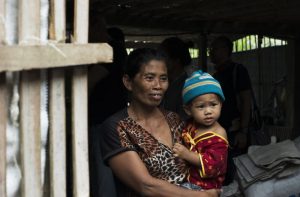About Women, Peace and Security
 It has been 18 years since the passing of the UN Security Council’s Resolution 1325 which provided the foundation for the Women, Peace and Security (WPS) Agenda. This landmark resolution marked the first time that the Security Council recognized the differentiated experiences of women during conflict as well as the unique expertise that women can and should contribute to peace and post-conflict decision-making processes in their communities.
It has been 18 years since the passing of the UN Security Council’s Resolution 1325 which provided the foundation for the Women, Peace and Security (WPS) Agenda. This landmark resolution marked the first time that the Security Council recognized the differentiated experiences of women during conflict as well as the unique expertise that women can and should contribute to peace and post-conflict decision-making processes in their communities.
Since the introduction of the WPS Agenda, we have seen a substantial increase in the number of peace agreements that include specific provisions concerning the inclusion of women or gender. According to UN Women, since the adoption of Resolution 1325, 27% of peace agreements have included references to women, compared with only 11 % between 1990 and 2000.
However, as detailed in the 2015 Global Study on the Implementation of UNSCR 1325, the progress of the WPS Agenda at the local level has been limited. This concern was echoed by the UN Secretary General in his 2017 Report on Women, Peace and Security, who claimed that despite the global visibility that WPS has provided to women’s experiences of conflict, the implementation of the agenda at the country level continues to fall short. In 2016, only half of the peace agreements signed contained gender specific provisions compared to 70% in 2015.
Many interventions aimed at facilitating WPS have approached women’s inclusion through top-down tactics: influencing policy and lawmakers, empowering women to realize their economic potential, and introducing quotas for women’s participation in peace agreements and political institutions. However, these approaches arguably do not always address the underlying structural causes of gender inequality. Furthermore, considering peace a top-level political or military process falls short of addressing the broader, nuanced issues faced by ordinary people affected by conflict in society. Conflict exacerbates the human rights violations that differentially impact women and minority groups, such as gender-based violence, political marginalization, forced displacement, or human trafficking.
For peace to be truly sustainable, civil society organisations and community peace builders – particularly women – must be included at the peace table.
Sustainable Development and N-Peace
The Sustainable Development Goals (SDGs), otherwise known as the Global Goals, are a universal call to action to end poverty, protect the planet and ensure that all people enjoy peace and prosperity. The SDGs came into effect in January 2016, and they will continue guide UNDP policy and funding for the next 15 years. As the lead UN development agency, UNDP is uniquely placed to help implement the Goals through our work in some 170 countries and territories.
The SDGs are by their very nature interconnected, but N-Peace, through its action to ensure more women are represented in peacebuilding, primarily works towards the achievement of two particular goals: SDG 5 (achieve gender equality and empower all women and girls), and SDG 16 (promote peaceful and inclusive societies for sustainable development, provide access to justice for all and build effective, accountable and inclusive institutions at all levels).
More information on the SDGs is available here.

